Albaycin in Granada – Spectacular Old District in the Shadow of the Alhambra

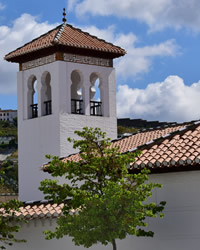
Enjoy a special day at the Alhambra with a guided tour
 Alhambra and Nasrid Palaces: discover the wonders of the Alhambra with this all-inclusive tour: the Nasrid Palaces, the Generalife, the Alcazaba, and more.
Alhambra and Nasrid Palaces: discover the wonders of the Alhambra with this all-inclusive tour: the Nasrid Palaces, the Generalife, the Alcazaba, and more.
 Alhambra + Albaicín + Sacromonte: a perfect combination of a guided tour of the Alhambra in the morning and a guided tour of the Albaicin and Sacromonte in the afternoon.
Alhambra + Albaicín + Sacromonte: a perfect combination of a guided tour of the Alhambra in the morning and a guided tour of the Albaicin and Sacromonte in the afternoon.It has always been a city enclosed within the walls of Granada, perhaps due to the strong Muslim influence it has had since its origins.
What does the Albaicin mean?
The name Albaicín or Albayzín may derive from the Arabic Rabat al-bayyasin, meaning the falconers' neighborhood, or perhaps from the term Al-bayyazin, after the inhabitants of Baeza who settled here.There are also historians who suggest that the name Albaicín simply means 'neighborhood on a slope'. When you visit this neighborhood, you will find this to be true.
 And although you may encounter various spellings, there seems to be a consensus that "Albaicín"
is the most correct and current one.
And although you may encounter various spellings, there seems to be a consensus that "Albaicín"
is the most correct and current one.
History of the Albaicin
Before the construction of the Alhambra was built, the Albaicín was already a Muslim court.Here, in the 11th century, the Zirid dynasty constructed their royal palace, significant Islamic buildings, and temples encircled by a sumptuous fortress. The city's Great Mosque was also established in this area.
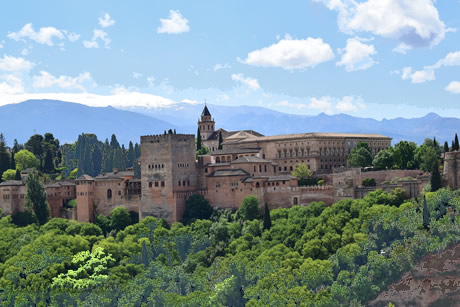 The city descended through San Nicolás to the banks of the
Darro River, populated with
luxurious houses and graced with splendid public baths, as can be seen in the remains of the
Bañuelo.
The city descended through San Nicolás to the banks of the
Darro River, populated with
luxurious houses and graced with splendid public baths, as can be seen in the remains of the
Bañuelo.
Even so, the Albaicín reached its peak of splendour during the Nasrid dynasty, when it boasted a population of more than forty thousand inhabitants and thirty mosques.
The streets were very narrow and the houses were small and tidy. It had numerous wells, some of which have survived to the present day.
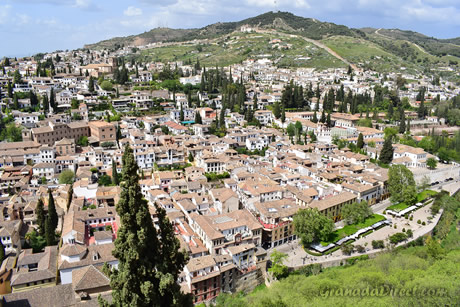 There were also important palaces and residences of the nobility of Granada.
There were also important palaces and residences of the nobility of Granada.
After the Conquest by the Catholic Monarchs, the Albaicín was designated as a place of residence for the Muslims, and they gradually settled here.
Other Christian neighborhoods that emerged within the medina gradually gained prominence and evolved into the new commercial and cultural center of Granada.
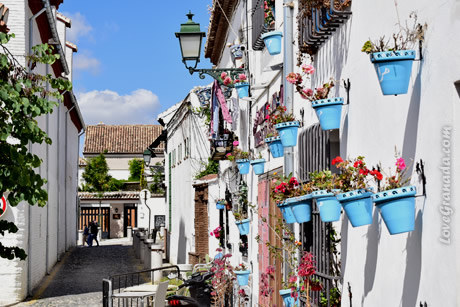 After several Moorish uprisings, the monarchs expelled
all those who practised the Muslim religion, and all the mosques were demolished.
After several Moorish uprisings, the monarchs expelled
all those who practised the Muslim religion, and all the mosques were demolished.
The neighborhood of a thousand mosques transformed into a neighborhood of a thousand churches. At the beginning of the 17th century, the Moors permanently vacated their houses in Albaicín.
The affluent Christians who resided in the medina seized the opportunity and constructed their opulent cármenes (luxury country houses with gardens) there.
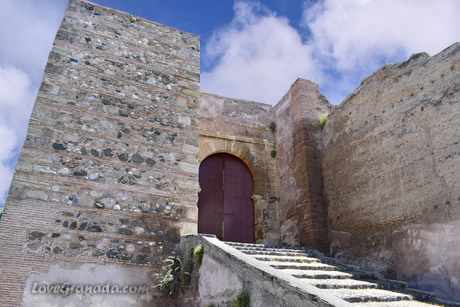
World Heritage Site
The Albaicín was designated a World Heritage Site by UNESCO in 1984 due to its exceptional universal value.The neighborhood stands as a distinctive and well-preserved example of Hispano-Muslim architecture from the medieval period.
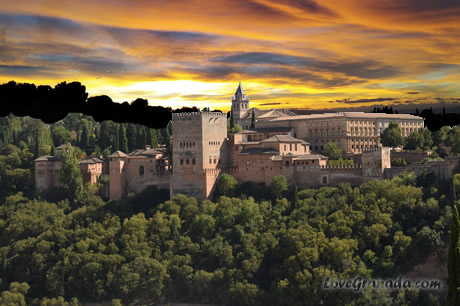 It is a place to relax, to wander through its narrow streets, and to discover viewpoints that are not mentioned in any guidebook.
It is a place to relax, to wander through its narrow streets, and to discover viewpoints that are not mentioned in any guidebook.
It's an exceptional place to watch the sunset over the Alhambra especially at the precise moment when it turns red.
When you admire the stunning scenery of the Albaicín from the Sabika hill (from the Alhambra) you will understand why the Nasrid kings chose to build it there.
There is no better way to explore the Alhambra than with a tour guide
Alhambra Guided Tour: a top-rated guided tour led by a knowledgeable local historian will definitely add a special touch to your visit. Includes access to all areas.
Alhambra + Albaicín + Sacromonte Tour: or, for just a little bit more, uncover the wonders of the Alhambra, alongside 2 picturesque neighborhoods of Granada.
What to see in the Albaicín?
In the Albaicín, you will come across many interesting places: medieval walls, impressive viewpoints, Moorish houses, churches, convents, charming little squares, and beautiful villas.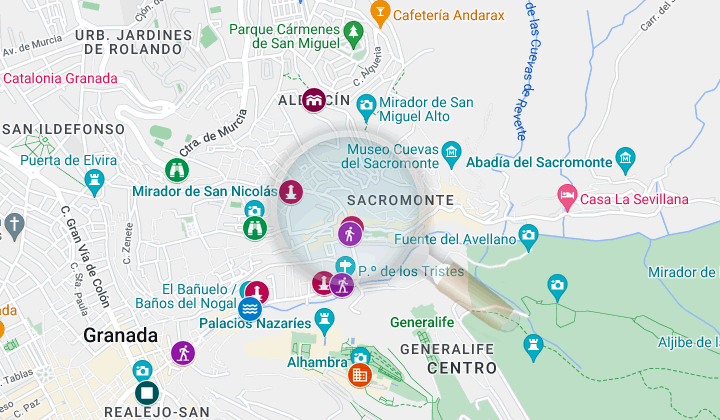
Make your experience in Granada even more complete and memorable
10 Best Caves and Venues for Flamenco in Granada: immerse yourself in the passion of flamenco and live unique experiences in the best tablaos in the city.
Authentic Arab Baths and Relaxing Massage: enjoy a deep relaxation experience with an exclusive massage in a traditional setting.
To talk about the Albaicín is to talk about the Paseo de los Tristes, the Cuesta del Chapiz, the Mirador de San Nicolás, the Arco de las Pesas, Plaza Larga and many other emblematic places.
It is an excellent place to try tapas and homemade food in its popular bars and terraces.
To fully enjoy this experience, all you need are a pair of comfortable shoes and a knowledgeable guide.
Here, we invite you to follow in our footsteps:
There is also the possibility of taking a free guided tour through the
Albaicin and Sacromonte Guided Tour or Historic Center Guided Tour.
The House of Zafra
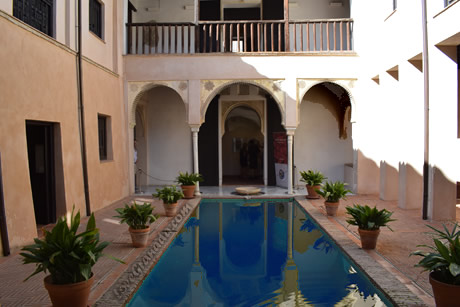 We begin with the beautiful Casa de Zafra
in the Lower Albaicín (Portería de la Concepción street, 8).
We begin with the beautiful Casa de Zafra
in the Lower Albaicín (Portería de la Concepción street, 8).
This should be the starting point of our journey through the Albaicín, not only because it houses the Interpretation Centre of the Albaicín, but also because it is the sole Arab house that has endured and can be visited today in the neighborhood.
This Moorish house is an outstanding example of Nasrid period domestic architecture and is well-preserved.
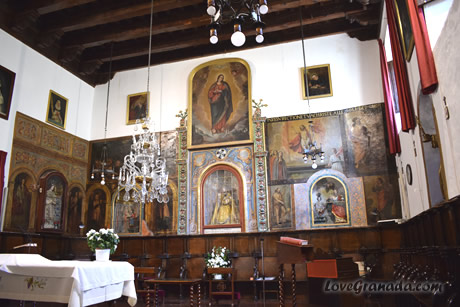 It served as a Hispano-Muslim dwelling during the 14th and 15th centuries and contains significant
original wall paintings from that period.
It served as a Hispano-Muslim dwelling during the 14th and 15th centuries and contains significant
original wall paintings from that period.
After the Conquest it became the property of the secretary of the Catholic Monarchs, Hernando de Zafra.
After his death, this and other similar houses were handed over to the Dominican order for the construction of the convent of Santa Catalina de Siena.
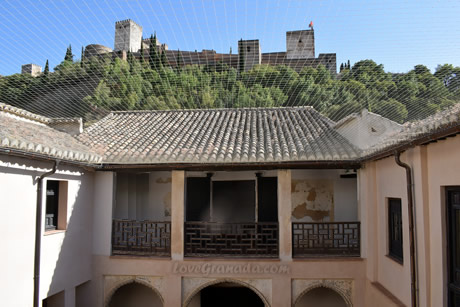 Fortunately, the Casa de Zafra was preserved and restored. It has been declared a historic-artistic
monument and a Property of Cultural Interest.
Fortunately, the Casa de Zafra was preserved and restored. It has been declared a historic-artistic
monument and a Property of Cultural Interest.
In the interpretation centre located in this building, you will find information panels, screens, QR codes, and video projections that will aid in understanding this enigmatic neighborhood, its streets, squares, and viewpoints.
Casa Horno del Oro
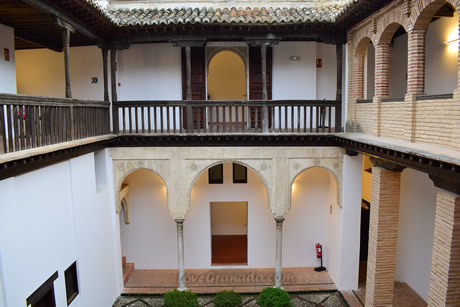 ontinue along the Paseo de los Tristes,
still in the lower Albaicín.
ontinue along the Paseo de los Tristes,
still in the lower Albaicín.
Before ascending the steep streets that will lead us to the heart of the neighborhood, we suggest you visit a Moorish house the Horno del Oro (Horno de Oro street, 14).
This house was constructed shortly after the arrival of the Catholic Monarchs in Granada.
Its lovely main entrance, now unused, features a beautiful doorway and horseshoe arches.
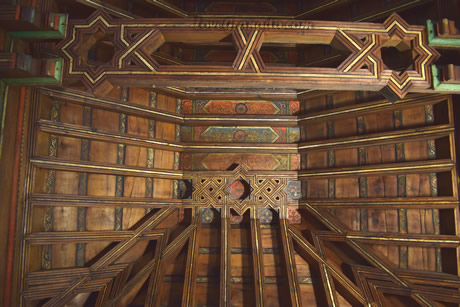 Upon entering, we encounter a rectangular courtyard with a pool in the center, flanked by porches on the shorter sides,
triple arches, and ornate columns.
Upon entering, we encounter a rectangular courtyard with a pool in the center, flanked by porches on the shorter sides,
triple arches, and ornate columns.
On the upper floor, there is a beautiful balustrade and rooms with exquisite Mudéjar coffered ceilings.
The Chapiz House
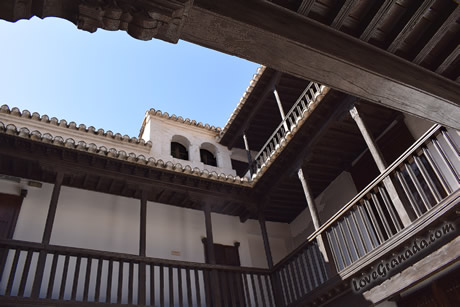 At the end of the Paseo de Arina, as we ascend the Cuesta del Chapiz, we encounter another excellent example
of a Moorish house in the Albaicín.
At the end of the Paseo de Arina, as we ascend the Cuesta del Chapiz, we encounter another excellent example
of a Moorish house in the Albaicín.
Although it is sometimes referred to as a single house, it is, in fact, two Moorish houses from the 14th century connected to each other.
The Chapiz houses are a masterful combination of Moorish and Christian architectural elements.
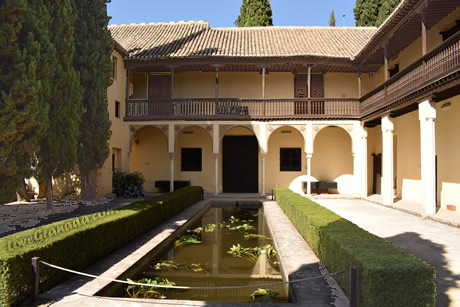 They have been part of an ancient Moorish palace known as Dar al-Bayda (white house).
They have been part of an ancient Moorish palace known as Dar al-Bayda (white house).
On leaving Casa del Chapiz, look out for the pretty little square of the Peso de la Harina and the well of the same name a little further up the hill.
Continue walking along the Cuesta del Chapiz until you reach the Plaza del Salvador. We are now in the upper part of the Albacín, and the first thing we see is the Iglesia del Salvador (church).
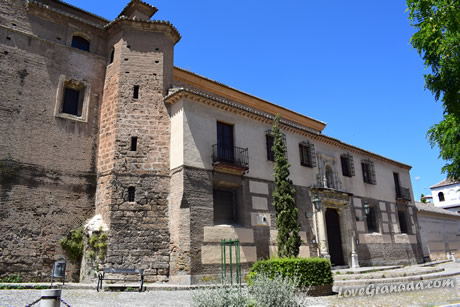
Iglesia del Salvador (Church of the Salvador)
The Iglesia del Salvador is a church built on the site of the ancient Great Mosque of the Albaicín.The only remnants from the original mosque is a beautiful courtyard, the Patio de las Abluciones, a well in remarkably good condition, and some columns.
It is said that this was the most beautiful mosque in all of Al-Andalus, constructed in the 18th century by the Muslim refugees who settled here shortly after the conquest of Baeza.
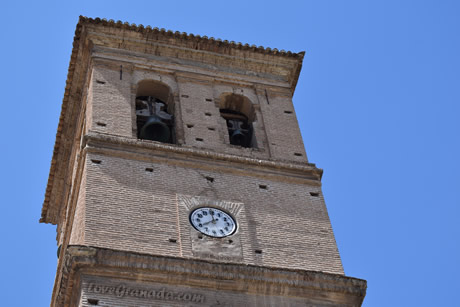 The Church of El Salvador was one of the first parishes in the city, consecrated in 1499 by Cardinal Cisneros
with the aim of promoting the Christian faith in this Moorish neighborhood.
The Church of El Salvador was one of the first parishes in the city, consecrated in 1499 by Cardinal Cisneros
with the aim of promoting the Christian faith in this Moorish neighborhood.
The new building was completed in 1594 and its main façade made of Malahá stone is worthy of admiration.
A smaller 17th-century side doorway provides access to the old mosque courtyard, now serving as the atrium of the church.
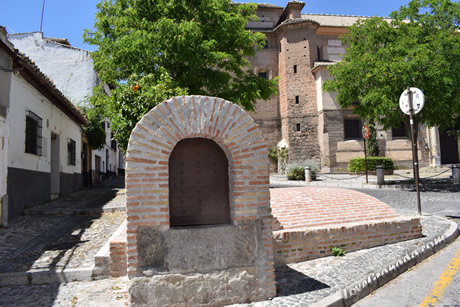 Inside the Iglesia del Salvador you will find important works by artists of the period, such as José de Mora,
Bocanegra and Pablo de Rojas.
Inside the Iglesia del Salvador you will find important works by artists of the period, such as José de Mora,
Bocanegra and Pablo de Rojas.
You can see these items in the church museum.
When you leave the church, before continuing to the Placeta del Abad, you should take a break in the Plaza Aliatar, a place famous for its tapas bars and sunny terraces.
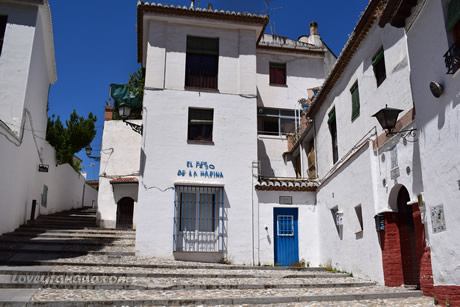 This is an excellent place if you want to enjoy the gastronomy of Granada.
This is an excellent place if you want to enjoy the gastronomy of Granada.
Abbot's Square
We leave the Church of Salvador behind and enter the Placeta del Abad, where we can find the remains of the ancient Bib-al-Bunud Gate or Puerta de los Estandartes.When a new Sultan ascended to power in the kingdom of Granada, it was here that the banner announcing his arrival was raised.
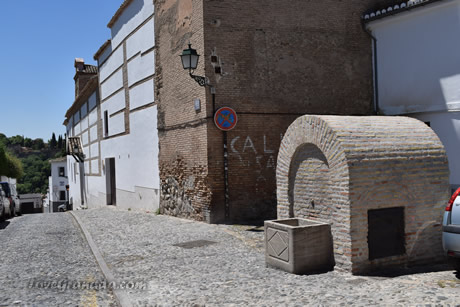 The Albaicín and the Alcazaba were connected through this gate, and all that remains of it are the bastions
that can be seen behind the small well.
The Albaicín and the Alcazaba were connected through this gate, and all that remains of it are the bastions
that can be seen behind the small well.
Take a break and contemplate the marvelous views of the Alhambra from this beautiful square.
San Nicolás Viewpoint
If you continue along the Callejón de las Tomasas, you will reach the Mirador de San Nicolás, one of the most famous viewpoints in the Albaicín.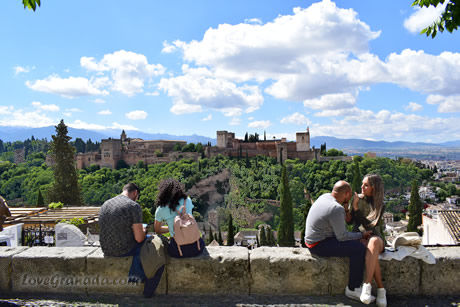 Here you will be overwhelmed by the views, as you can see the entire monumental complex of the Alhambra
with the city at its feet and the Sierra Nevada mountains behind.
Here you will be overwhelmed by the views, as you can see the entire monumental complex of the Alhambra
with the city at its feet and the Sierra Nevada mountains behind.
It is one of the best spots to take sunset photos in Granada.
Look around, and you'll spot the Church of San Nicolás and a large well, the Aljibe, great fun for children to play on.
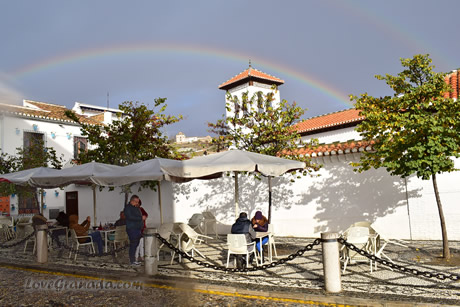 Behind the church, you'll discover some of the neighborhood's most popular bars.
Here, you can enjoy some tapas and the lively atmosphere that characterizes this place.
Behind the church, you'll discover some of the neighborhood's most popular bars.
Here, you can enjoy some tapas and the lively atmosphere that characterizes this place.
Now it's time to enter the oldest part of the neighbourhood.
Other Historic Sites in the Albacín
You can continue along the Callejón de las Tomasas until you reach the Calle Santa Isabel la Real and the Placeta de San Miguel Bajo.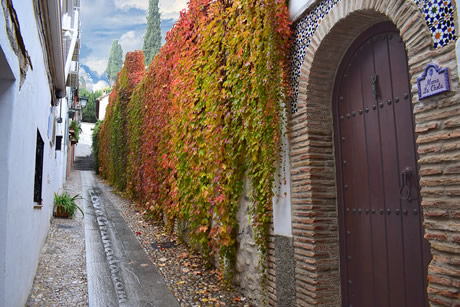 Another option is to take the Callejón de San Cecilio and continue to the left, instead of passing
through the Arco de las Pesas, in order to follow the Calle Aljibe de la Gitana until you reach the Callejón de las Monjas.
Another option is to take the Callejón de San Cecilio and continue to the left, instead of passing
through the Arco de las Pesas, in order to follow the Calle Aljibe de la Gitana until you reach the Callejón de las Monjas.
Either way you will soon discover that you are in one of the most historic places in the Albaicín.
Here you will find the Monastery of Santa Isabel la Real, the Palace of Dar-al-Horra and the remains of the old wall of the Alcazaba Cadima.
Add a little magic to your day in Granada!
Find Your Ideal Experience: 100+ Tours and Activities in Granada:
Explore Granada with a variety of tours and activities, designed to help you discover the city in a fun and memorable way. There's something for everyone.
Explore Granada with a variety of tours and activities, designed to help you discover the city in a fun and memorable way. There's something for everyone.
The Palace of Dar-al-Horra
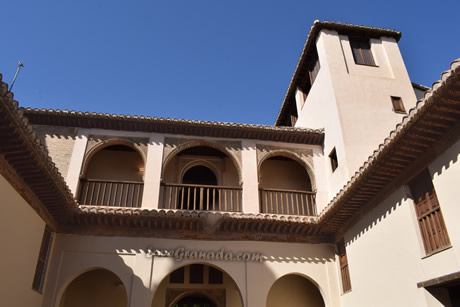 The Palace of Dar-al-Horra or Casa de la Honesta (Callejón de las Monjas s/n) takes its name from its main inhabitant:
Aixa Dar-al-Horra (translated as "the Honest") who was the mother of Boabdil, the last Nasrid monarch of Granada.
The Palace of Dar-al-Horra or Casa de la Honesta (Callejón de las Monjas s/n) takes its name from its main inhabitant:
Aixa Dar-al-Horra (translated as "the Honest") who was the mother of Boabdil, the last Nasrid monarch of Granada.
The palace was constructed in the 15th century on the very spot where the Palace of the Zirid Kings once stood.
It is the only Nasrid palace that exists outside the Alhambra and it was here that important Nasrid revolts took place, such as the one that brought Boabdil to the throne of the Alhambra.
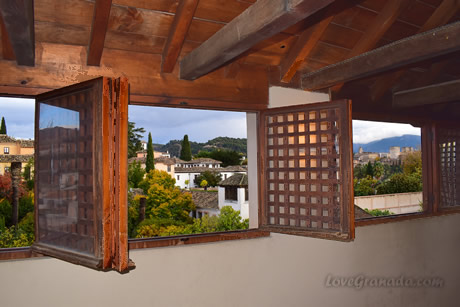 Its structure and decoration are a clear example of Nasrid's architecture.
Its structure and decoration are a clear example of Nasrid's architecture.
There is a central courtyard with a rectangular floor plan and a large well in the middle, two porticoes on its shorter sides, and a large wooden eave with a frieze containing beautiful inscriptions from the Koran.
On the north side of the courtyard is a rectangular room with alcoves and a belvedere overlooking the slope of Alhacaba and the church of San Cristóbal.
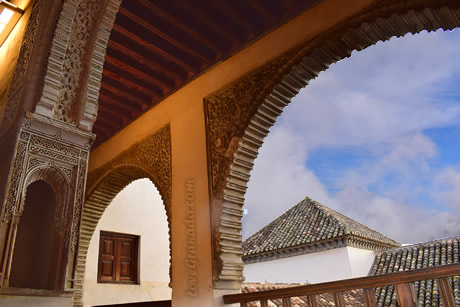 Look for the remains of Arabic inscriptions on its plasterwork, where beautiful prayers and praises were once written.
Look for the remains of Arabic inscriptions on its plasterwork, where beautiful prayers and praises were once written.
On the first floor, you will encounter a room with a similar layout and another even more impressive viewpoint. The keep has been entirely restored.
In the south portico is the Christian chapel that was once connected to the Convent of Santa Isabel la Real. It boasts a splendid wooden roof.
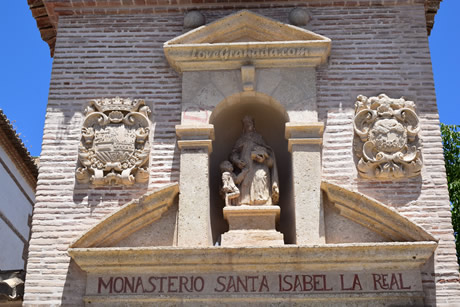
The Convent of Santa Isabel la Real de Granada
One of the earliest significant Christian constructions in Granada.It was the Catholic Queen herself who commissioned its establishment in 1501 and provided funding in her will for the project's completion.
Originally, this beautiful monastery was planned to be built next to the Alhambra, where the Convent of San Francisco was eventually constructed atop the remains of an ancient Moorish palace.
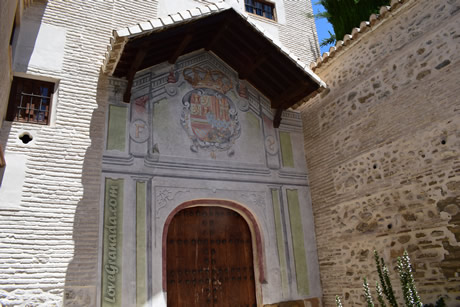 Finally, Isabella the Catholic decided to place it opposite the Alhambra in the Albaicín district adjacent to the Palace of Dar-al-Horra.
Finally, Isabella the Catholic decided to place it opposite the Alhambra in the Albaicín district adjacent to the Palace of Dar-al-Horra.
The first nuns arrived in 1507 and occupied the Nasrid palace until the work was completed in 1592.
The façade of the church is a masterpiece of late Gothic, a style rarely seen in Granada. It is believed to be the work of the architect who designed the Royal Chapel: Enrique Egas.
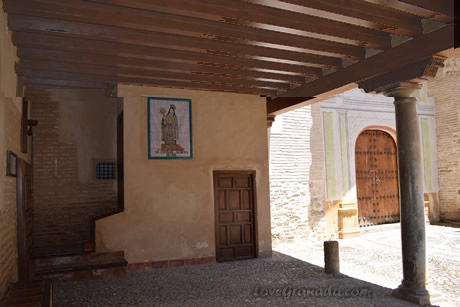 Once inside, we discover a Mudejar church of great artistic value dating back to 1522.
Take note of the exceptional coffered ceiling in the presbytery.
Once inside, we discover a Mudejar church of great artistic value dating back to 1522.
Take note of the exceptional coffered ceiling in the presbytery.
The altarpiece and the mural paintings on the walls, both from the 18th century, also catch the eye.
In the nave of the church, you can admire the Mudéjar framework, which, along with that of the cloister, featuring beautiful muqarnas, is one of the oldest and most exquisite in Granada.
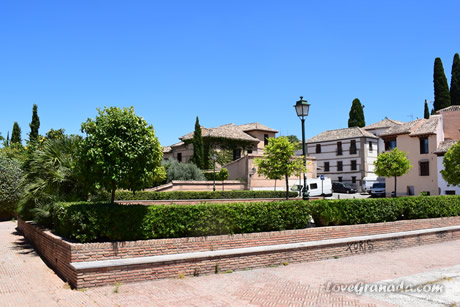 Visits to Santa Isabel la Real (c/ Santa Isabel la Real, 15) are by appointment only and include a guided tour. Email: visitastaisabellareal@yahoo.es.
Visits to Santa Isabel la Real (c/ Santa Isabel la Real, 15) are by appointment only and include a guided tour. Email: visitastaisabellareal@yahoo.es.
Other Viewpoints in the Albaicín
When you leave the Convent or before entering it, remember to take a few minutes to contemplate the views at the Mirador de Santa Isabel la Real, which is right next door.It is a very picturesque viewpoint and quieter than San Nicolás.
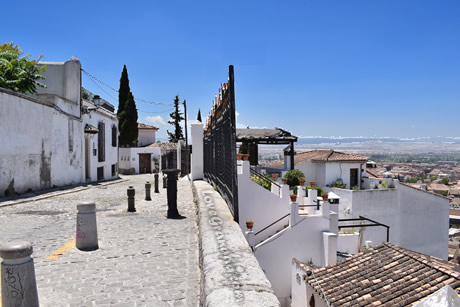 Another nearby viewpoint that you should visit is the Mirador de la Lona, accessed through the beautiful Placeta de San Miguel Bajo,
next to the church of the same name.
Another nearby viewpoint that you should visit is the Mirador de la Lona, accessed through the beautiful Placeta de San Miguel Bajo,
next to the church of the same name.
In the Placeta de San Miguel Bajo you will find excellent tapas bars and traditional restaurants.
El Aljibe del Rey)
Not far from here, in the Placeta del Cristo de las Azucenas, is the largest Muslim well in Granada: the aljibe del Rey (King's well).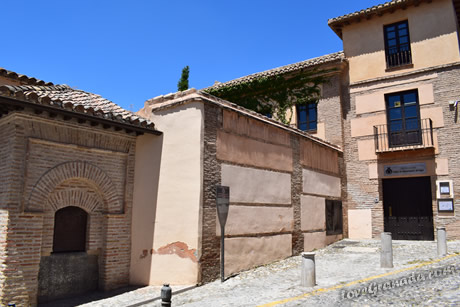 This well, situated in the heart of the Albaicín, dates back to the the Zirid period in the 11th century and
has a capacity of 300 cubic metres.
This well, situated in the heart of the Albaicín, dates back to the the Zirid period in the 11th century and
has a capacity of 300 cubic metres.
It has four naves covered by barrel vaults and three central arches.
Carmen del Aljibe del Rey also functions as a Water Interpretation Centre. The visit is both free and guided, available from Monday to Friday at 10:00, 11:00, 12:00, and 13:00, with a maximum capacity of 6 people per session.
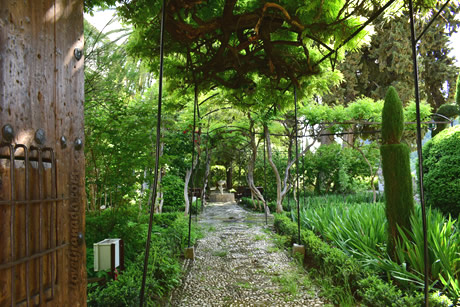 Here, you will gain insight into the "water culture" in the Nasrid Granada and discover how the network of wells in the
Albaicín worked. This system was connected to a unique traditional irrigation channel system, unparalleled anywhere
else in the world.
Here, you will gain insight into the "water culture" in the Nasrid Granada and discover how the network of wells in the
Albaicín worked. This system was connected to a unique traditional irrigation channel system, unparalleled anywhere
else in the world.
A valuable hydraulic system, it represents the cultural heritage legacy of the city, with most of it still in operation today.
So when you walk around Granada, take a good look at the wells and irrigation ditches that you will come across.
If you wish to delve deeper into the fascinating history of this area, take Albaicin and Sacromonte Guided Tour.
How to Get to the Albaicín in Granada?
How to Get to the Albaicin on Foot
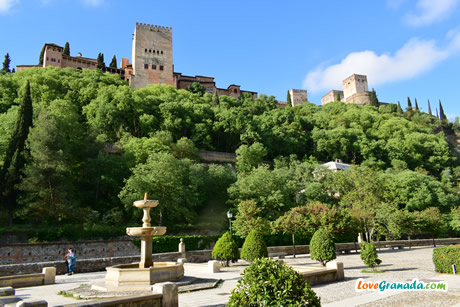 If you’re in good physical shape, the best way to visit the Albaicin is on foot. We recommend starting your walk
via Cuesta del Chapíz from Paseo de los Tristes.
If you’re in good physical shape, the best way to visit the Albaicin is on foot. We recommend starting your walk
via Cuesta del Chapíz from Paseo de los Tristes.
This route allows you to enjoy the scenic riverside area before exploring the Albaicín and Mirador de San Nicolás.
On your way down, take Calle Calderería Nueva, a charming street lined with shops and Arab teahouses - the perfect spot to relax with a cup of tea as evening falls.
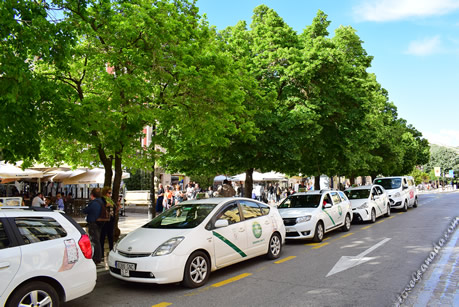 Keep in mind that Albaicín’s streets are cobblestone, which can be a bit challenging, so wearing comfortable shoes is highly recommended.
Keep in mind that Albaicín’s streets are cobblestone, which can be a bit challenging, so wearing comfortable shoes is highly recommended.
Getting to the Albaicin by Taxi
You can also take a taxi from the center of Granada. A taxi ride from Plaza Nueva costs around 5 euros and from the Alhambra around 8 euros. More information in: Granada Taxi.How to Get to the Albaicin by Bus
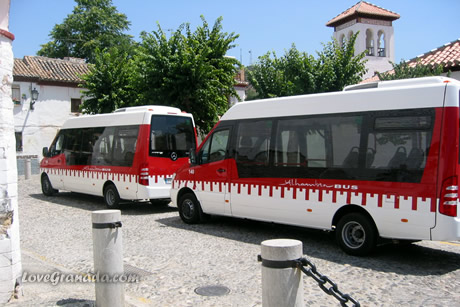 For those who prefer not to walk, taking the bus is a convenient option. Bus lines C31, C32, and C34 depart from Plaza Nueva.
They are small red minibuses designed for the narrow streets of the neighborhood.
For those who prefer not to walk, taking the bus is a convenient option. Bus lines C31, C32, and C34 depart from Plaza Nueva.
They are small red minibuses designed for the narrow streets of the neighborhood.
The final departure from Plaza Nueva to the Albaicín is at approximately 23:00 from Sunday to Thursday, and at 01:00 in the evening on Fridays and Saturdays.
Note that private cars are not permitted in the area.
More information at: Alhambra Buses.
Page Updated: Jul 14, 2025
Was this useful? Been to these sights? Share your thoughts!
© Copyright •
LoveGranada.com • Any use of the content, including copying of it in whole or in part is prohibited.
You Might Also Be Interested In
Opinions about Albaicin in Granada
A place with infinite charm
The Albaicin is beautiful!
A place with infinite charm that I advise you to visit. You can't leave Granada without seeing the Alhambra and this neighborhood: the Albaicin.
Do not miss the occasion of trying some 'tapa' in the neighborhood .. especially the area around the Mirador de San Nicolas .. even it is a little more expensive there .. but worth it for the views.
We will return soon and repeat the tour.
Charming neighborhood
The Albaicín neighborhood has a charm that cannot be forgotten. Its streets, the viewpoint of San Nicolás, the Darro river, the Chapiz slope. On this slope is the Palacio de los Córdovas, very beautiful palace and gardens. Everything in that neighborhood is wonderful. I also recommend tapas bars.
Stunning views of the neighborhoods
Is situated on a hill that rises above the city, and pridevos stunning views of the neighborhoods Sacromonte and Albayzin. The elevation, the separation, helps the palace avoid the typical clashing.
See More Reviews
Watch out for pickpockets!
I was scammed by the bird poo trick while walking through the Albaicin. Lost 100 Euros, so could have been much worse. Put wallets where they are inaccessible.
If you do get "bird poo" on your clothes and someone is following close behind you and then kindly offers to help clean your back or trousers, trust your instincts - it probably was him - no matter how smart he / she might look.
DO NOT ALLOW HIM / HER NEAR YOU!

